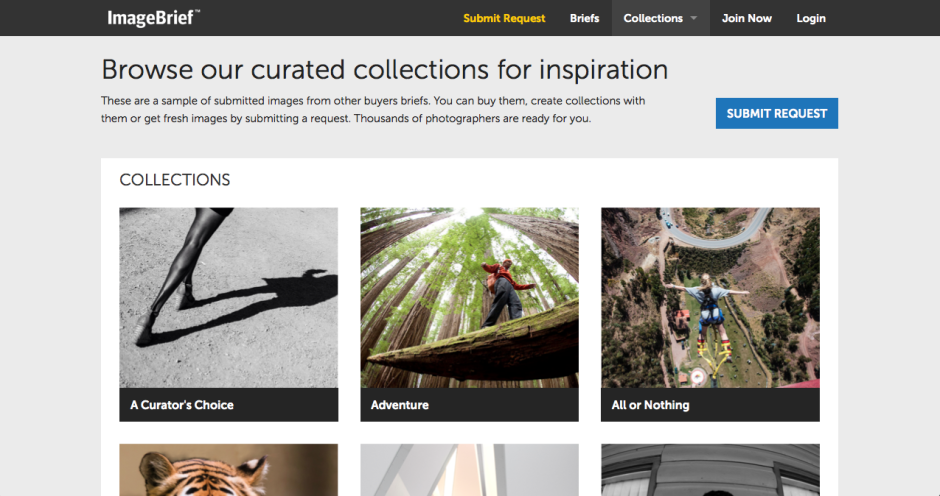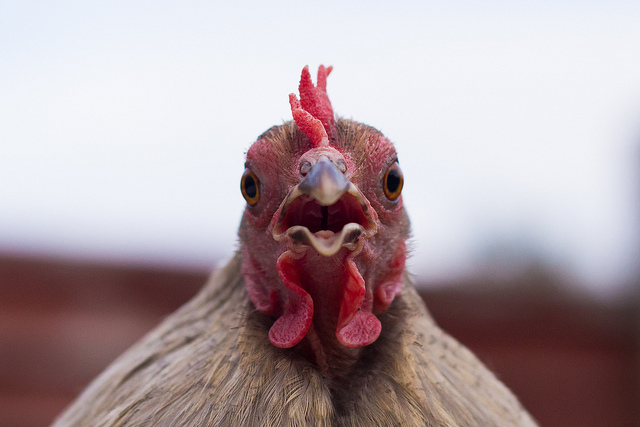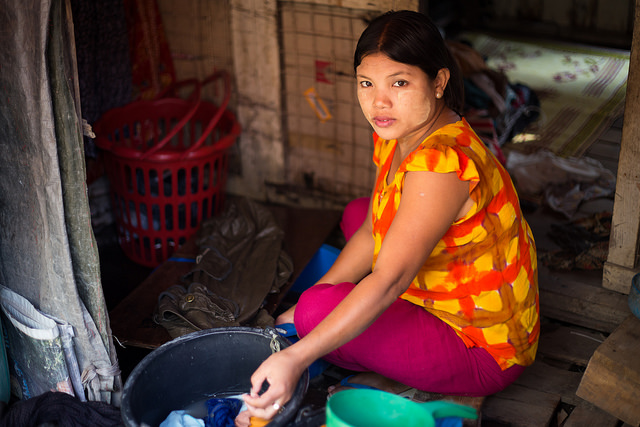Post-holiday is the best time to try your hand at some second-hand kit shopping, But we'd advise you to read our advice first.
Adobe has acquired Aviary. Good or bad?
When I saw last night that image editing start-up Aviary had been acquired by image editing behemoth Adobe my initial reaction was 'Hmm. Great for the Aviary team; but I'm not sure it's so great for consumers.' Fifteen or so hours on from that, and my opinion hasn't changed considerably. I'd probably augment it with 'Smart move by Adobe.' Using the term 'start-up' to describe Aviary might not be entirely accurate, but it's a question of interpretation, I suppose. It has been around since 2007 and its code has been used to edit over 10 billion photos. Even if you don't use its smartphone app to adjust your images, you might well have come across its editing tools that have been built into platforms such as Flickr and Mailchimp using its software development kit.
Great for Aviary
If part of the definition of 'start-up' is the intention to see your company acquired by another one, then Aviary at least meets that criterion. Judging by Aviary CEO Tobias Peggs' effusive blog post announcing the acquisition, this is all their Christmases, Chanukahs, and Eids rolled into one. And that's even without the agreed fee being disclosed.
The Aviary offices are close to those of Behance, which was acquired by Adobe in 2013. Their proximity meant the Aviary people talked a lot with Scott Belsky, Behance's co-founder who now serves as Adobe's VP of Products and Community, and 'it became obvious that we shared a strong vision for mobile creativity. It became even more obvious that we should join forces, accelerate combined efforts and better serve even more app developers and even more people wanting to be creative on mobile.' Aviary is all about allowing people to be creative, through its own apps and through its SDK. It thinks it can better do this by partnering with Adobe.
Smart move by Adobe
Apart from Aviary's app being a peach and Adobe being keen to expand its mobile prowess, Aviary's SDK is well established. Adobe's isn't: it launched as a beta in June. According to Scott Belsky: 'We have high hopes for the Creative SDK and are thrilled that Aviary will infuse wisdom, technology, and reach to new developers.' Provided that the likes of Flickr, Mailchimp, and Shopify don't run screaming, Adobe has made a calculated acquisition to expand itself into a market where it didn't have a strong foothold. For anyone familiar with the English Premier League, it feels a little like accusations of Manchester City buying its way to football titles rather than building its own team. If you can't beat the opposition, buy it.
Not so great for consumers?
We know that I'm cynical; it says so in my Twitter bio. Thus from my cynical consumer standpoint, I wonder how beneficial this is for Aviary's users. The Aviary and Adobe teams are enthusiastic for what they can build together, but in trying to merge two company's visions into one coherent strategy how much creativity will be sacrificed and how much will consumer choice suffer? To what degree might smaller company 'Let's do this!' mentality be eclipsed by corporate hierarchy? Might Aviary become less accessible as it is absorbed into Adobe's Creative Cloud?
My visceral reaction is that while there are potential benefits to be harnessed from the acquisition, there are plenty of pitfalls, too. I'd like to be proved wrong. I hate the see a good thing fail and I really like Aviary.
However, whether Aviary was 'right' to sell or not isn't within my purview, not really. It's a company, it's not the NHS. It acts in its best interests, not mine. I wish them all the best.
Buying and selling mobile imagery - where to go
There have been at least two pieces of news this week featuring companies that sell stock images created on mobile devices: first, EyeEm announced that it has redesigned its Android app and has partnered with Uber to offer new users a free ride to let them go places to take photos; second, Fotolia has also released a new Android app—Fotolia Instant—to complement its iOS version, which allows photographers to upload and sell their mobile images via the stock site. This got me thinking: how many stock agencies are mobile photo-friendly? Or where can you buy images made on mobile devices if that's what you want or need? I did a little digging and a little thinking and put together this list. I've tried to limit it to agencies or sites that are mobile-specific, have dedicated mobile collections, or easy means of uploading mobile images. There are sites such as Picfair that readily accept mobile images, but that's just part of its library.
Mobile-oriented sites

EyeEm
EyeEm is a mobile photography sharing app and community that launched Market, a platform for its members to sell their photos, earlier this year. Invitations are still being issued to join Market, but it's simple enough to request one.
EyeEm Market EyeEm apps: Android; iOS

Foap
Images can only be uploaded to Foap via its app. As well as adding images to the Foap library, image-makers can participate in missions set by brands and agencies searching for more specific content. Foap's terms of use are quite broad, which is worthy of consideration before deciding to sell images there.
Foap website Foap apps: Android, iOS

Scoopshot
Scoopshot expands on Foap's model, with buyers setting tasks for photographers in order to acquire the images they want. If someone sees a news image that they think is vaulable, it can be sent to the news task. Scoopshot doesn't go in for manipulated or filtered images; they prefer fresh and newsworthy content that meets task criteria.
Scoopshot website Scoopshot apps: Android, iOS

Twenty20
We took a look at Twenty20 last year and while we thought its simple pricing structure for selling mobile image files was great, the sales mechanism required some refinement. It's still in the beta stage, but it is there!
Twenty20 website Twenty20 app (iOS only)
Mobile-friendly agencies

Alamy
The more traditional Alamy stock agency has embraced mobile photography and its photographers can use the Stockimo app to upload their mobile images for sale amongst the Alamy library. Buyers can look for mobile images in the dedicated Stockimo collection.
Alamy website Alamy Stockimo collection Alamy Stockimo app (iOS-only)

Depositphotos
Depositphotos is a microstock agency that sells images under royalty free licences. It has a dedicated mobile photography app and collection: Clashot.
Depositphotos Clashot Clashot apps: Android, iOS

Fotolia
Fotolia is home to over 20 million images and it's prepared to add mobile photos into that mix. You can find all its mobile images in its Fotolia Instant collection.
Fotolia website Fotolia Instant collection Fotolia Instant apps: Android, iOS

Getty, including iStock by Getty
When people think of stock agencies, they think of Getty. If they don't think specifically of Getty, they might well think of a Getty subsidiary. Getty photographers are being invited to join Moment, along with the old Flickr collection, while new photographers should be able to join in due course. Whether or not you want to get involved with the Getty licensing machine is another matter.
Getty Images Getty Moment app (iOS-only)
Any other suggestions? Leave them in the comments section!
The Photocritic second-hand kit buyers' guide
I recently saw an article that listed sound advice when it comes to saving money when purchasing new camera gear. Amongst other suggestions, it mentioned part-exchanging your gear, buying at demo days, and waiting for manufacturers' seasonal cashback offers. What it didn't suggest was to buy second-hand, however. Someone did point out to me that then the gear wouldn't be 'new' in its strictest sense, but I take a slightly less stringent view of the word 'new' in this respect. It's still new to the buyer, after all. I'm a huge fan of buying camera gear second-hand. Some of the lenses that I've picked up have been practically box-fresh, but bought at a half or two-thirds of the retail price. And it's a small step towards reducing waste and the use of valuable resources. But buying second-hand does require you to put some trust in the seller as well use some of your nous and common sense. So what should you do? This guide has been put together using my own experiences together with advice from Campkins Cameras in Cambridge (where I buy lots of my kit) and Adorama, who sell used as well as new gear. It is of course advice, and while it's as thorough as I can make it, it probably falls short of comprehensive somewhere.
What to buy
My own preference is for new bodies but second-hand glass, still there are great deals to be had on very well kept camera bodies. Used accessories can be picked up on the cheap, too. Almost anything that you'd like to establish or augment your photographic arsenal can be purchased second-hand, from vintage kit to barely used up-to-date digital gear.
Given that there are so many places to look for used photographic equipment, it's advisable to begin your search with a clear idea of what you want and how much you have to spend. You might not get very far with 'I want a new lens!'
Where to buy
How long is a piece of string? There are so many places offering second-hand sales it might feel a little overwhelming. The first places that might spring to mind are eBay, Craigslist, and Gumtree. Then there are major retailers who offer second hand sales in addition to their new business: Adorama, KEH, Wex Photographic, Wilkinson Cameras, for example. Your local independent camera dealer probably has a second-hand range, too. It's also worth watching Twitter as well. I quite often see people offering their kit for sale there before taking it to a dealers or trying eBay.

All of these come with their advantages and disadvantages. Online auction sites offer you the opportunity for great deals on price, but you have to place your trust in the seller that they're honest and reliable and that their descriptions are accurate. What you might think of as mint condition could be different to someone else's idea; and heaven forfend that someone takes your money and doesn't deliver the goods, or fences stolen property. The aftersales care and protections, for example returns and warranties, are less straightforward than with established traders, too.
Purchases made through established companies might be a bit more expensive than what you'll manage on eBay or similar, but most of them have a clear returns policy and even offer a warranty on goods. These companies' ratings systems usually afford you a clearer indication of the condition of the product you're looking to purchase, so you shouldn't receive any nasty surprises when it arrives. But, if you're buying over the Intergoogles, you don't have the opportunity to hold the product in your hand and test it out for yourself. This is perhaps the biggest advantage of local traders. I pop down and test out lenses before spending money on them and ask about a gazillion questions as well. Where I shop offer me a six month warranty on second-hand purchases, which is a great benefit.
It all depends on how confident you are buying over the Internet and how comfortable you feel spending money on goods sight unseen.
When to buy
If you're in the market for a particular camera or lens, it's worth keeping an eye on manufacturers' release cycles. When new models in the line that you're interested in go on sale, you're likely to find a bump in people selling their older versions when they upgrade. For example, Nikon announced its D810 today; as a consequence, people wishing to upgrade from their D7100 or even their D800 or D800E will probably start thinking about selling them on soon.

Taking a look at the second-hand market just after Christmas is a good idea, too. People receive gifts, they're given money to put towards new gear, and they resell their old equipment as a consequence.
Or you can do what I do. Decide on the specifics of your next purchase, but not restrict yourself to a timescale and ring up your local dealers every week to ask if they've anything that fits your requirements.
Questions to ask
You might not have the opportunity to ask questions of goods being sold online by major retailers, but you can ask questions of sellers on auction sites and in bricks-and-mortar shops. The first question I always ask is 'Why is it being sold?' If the seller can't give you an answer that sounds reasonable, you might want to reconsider the purchase. I ask about the original paperwork for the product, too. And I always double-check on the returns policy and the warranty.
If you're buying via an auction site, don't be afraid to ask the seller to clarify anything mentioned in the description, for more images of the product, or anything you'd like to know but hasn't been covered, for example where and when it was purchased originally.
What to look for
Should you be buying via a site that uses a grading system for second-hand goods, read their ratings descriptions carefully to understand the condition of the product you're looking to purchase. Some sites won't sell goods that don't function normally but others will, indicating that they're good for parts. Make sure you know the code!
If you're looking at goods graded N or D on Adorama, these are just about as good as new and it's unlikely that there will be much difference in the price from a brand new product. You're likely to get a better deal on something that Adorama grades as E or OB. OB means 'Open Box' and it's the equivalent of a demonstrator car: it's been used as a display model or for training purposes.
Here are some of the things to look for, but remember it isn't an exhaustive list by any means.
Cameras
- Actuations - how many times has the shutter been released? Obviously the fewer the better
- Battery and battery connectors - you don't want the battery to have leaked or for any of the connectors to be mis-shapen
- SD card slot - do cards move in and out cleanly and record without issue?
- Sensor - are there any dead pixels (you can spot them by taking a shot into the lens cap and looking at it in an editing suite) or dust or oil spots?
- Lens mount - it mustn't be mis-shapen or have worn threads
- Auto-focus - does it work properly?
- Scrapes and scuffs, dents and dings - a couple are to be expected, but you probably don't want it looking as if it were dropped down a well and dragged out again

Lenses
- Dust and spots - you'll never get a lens that's perfectly dust-free, even brand-new, but you really don't want obvious dust or dirt spots
- Fungus - lenses that have been left in dark, slightly damp conditions are prone to growing fungus. You don't want any of that.
- Scratches - you want a scratch-free lens
- Aperture blades - check the aperture blades work properly and are clean
- Zoom and focus rings - twist the zoom and focus rings to ensure they're in full working order
- Auto-focus - check the auto-focus works properly
- Threads - you don't want the threads to be stripped or in any way mis-shapen
Finally, remember the adage: if it seems too good to be true, it probably is. Now: happy shopping!
ImageBrief: a new approach to selling images
Control, commission, and contacts. If that sounds like a reasonable premise under which to sell your image online, you might want to check out ImageBrief. It's an online global image marketplace where buyers request specific images to meet their needs and photographers submit photos that they believe meet the brief. The average fee is $800 and photographers take upto a 70% cut. Interested?
How does ImageBrief work?
Buyers, who are a mixture of art buyers, creative directors and editors at advertising agencies, brands, corporates and publishers, as well as freelancers, submit a brief describing exactly what they want in detailed but natural language. Photographers who are signed up to ImageBrief can then submit photos that they think meet the brief's criteria for consideration. Before any images are presented to buyers, however, they're all vetted by the ImageBrief staff to ensure relevance and maintain quality. For the successful photographers, there's a potential 70% of the commission fee available. I've not seen one brief below $200 and plenty in excess of $1,000.
Photographers are able to keep up with new briefs via email and an iPhone app notification. There's an Android app in the works.
In a world where the stock agency model holds sway, how is ImageBrief attracting buyers and photographers?
It's all very well having a great model that serves buyers' needs without giving them photo-blindness from trawling through acres of potentiall suitable images, and gets photographers' images in front of buyers, but if no one knows about it, it doesn't benefit anyone. ImageBrief has found that word-of-mouth has worked in their favour, togetehr with social media and targetted email campaigns. Rainer Waelder was spotted by the ImageBrief team and invited to submit a portfolio for consideration.

The ImageBrief team is very keen to point out that its fresh approach is part of its appeal: 'The images are different, the process is different and the outcome for the brands and clients they represent is different.'
The importance of the curaton model
ImageBrief regards the curation model as critical to its success and integrity. 'It's what allows us to present such amazing, tailored content. Each of our photographers is reviewed upon registration and then images are curated every step of the way to ensure quality and relevance to the client.' The buyers aren't overwhelmed in their search and photographers making sales take better a better cut of a significant fee. It's win-win.
Photographers' opinions
Uploading images to a stock agency and forgetting about them might seem like a relatively easy and stress-free option to sell your photos, but ImageBrief photographers are quick to point out that it doesn't offer nearly the return that an ImageBrief sale does. 'I’ve only made one sale so far with ImageBrief though I have been shortlisted several times. But that one sale was my biggest ever and more than made up for the effort expended on other briefs. One of the great things about ImageBrief is that it attracts high-profile clients still willing to pay a fair and proper rate for images. That makes us photographers feel it’s worth our while to submit images in the first place,' says UK photographer Matt Doggett.

What's next for ImageBrief?
A commissioning platform is in the works that is intended to allow clients to seek out a photographer when they haven't found the perfect pre-existing image. This can be tailored based on location, categories, or references. A new premium account structure will let photographers put themsleves forward for assignments and maybe develop relationships with clients that could go for ages.
Want to get involved?
It's free to sign up to ImageBrief and that's probably the fastest way to learn how it works. Look at the kinds of images that clients are buying in the 'Collections' section. Download the app so that you can keep on top of new briefs.
ImageBrief photographer Slobodan Blagojevic recommends being selective and making sure that you fulfil the brief to be in with a chance, but perhaps more importantly 'do not think of ImageBrief as just another stock library, i.e., do not submit typical stock imagery. Clients come to ImageBrief precisely because they want something different, something fresh, something unique.'
7 super suggestions for selling stock
Love them or loathe them, stock agencies are a significant sector of the photography industry. How else do people who are looking to buy images for use in publications, in advertising campaigns, or on websites acquire them without commissioning a photographer? For some photographers, then, selling stock imagery can be an important source of income. It might not keep the wolf away from the door, but it could well keep the candles burning. In which case, how do you make the best of it? If you're looking to make a bit of pin-money selling your photos, what are the dos and don'ts? If you're already in the stock game, how can you do it better? I spoke to a variety of stock agencies—Alamy, Shutterstock, and EyeEm Market—who kindly shared their words of wisdom to help you make the most out of the stock market.
Content
It might come as a surprise, or it might not, but stock agencies need photos of anything and everything. That's pretty much the entire point of them, you see. Alan Capel, Head of Content at Alamy says: 'Everything can be updated, good photographers will look for a new take on old clichés.' Like me a few weeks ago, people need generic photos of the father-of-the-bride. However, there are particular types of imagery that are preferable and subjects that have growing demand. So think about producing:
- Real-looking, natural-feeling photos; posed and staged photos aren't so in demand
- Photos that are out-of-the-office and out-of-the-ordinary; think oil rig as opposed to desk, farm yard instead of back yard, mountain-top rather than table-top
- Images from the emerging markets: Brazil, Russia, India, China, South Africa
- Healthcare and medical photos
- Anything that documents culture and diversity
- Photos local to you - who else is there to shoot them?
'We’d love to see more adventurous shoots in more unusual locations/scenarios!' says Capel. While he knows that might be easier said than done, 'Photographers are tenacious and resourceful and they will find a way.' And if you're pursuing the emerging markets theme, that should include lifestyle and local culture as well as business and industry photos. Remember: there are consumers in those emerging markets, too!

Is there anything that absolutely should be avoided? Well, if a photo's good, anything goes. But over at EyeEm, they warn people off of pets, pot plants, and predictable self-portraits.

Spotting trends
It's probably a good idea to keep one eye on what's happening now and another on the horizon. Scott Braut, VP of Content at Shutterstock, recommends using social media to gauge trending topics and examining news headlines for common themes (for example politics, pop culture) to help you pick out favourable subjects. But at the same time, think about what might be happening in two, three, or four years' time: Olympic Games, World Cups, centenaries, and anniversaries.

Style
It's always best to stick to what you know best, which is your own style. But Capel says not be afraid of adding another string to your bow by including mobile images—Alamy has the stockimo app for that, and there's the new EyeEm Market, too—and Braut says that photos with Instagram-esque filters are popular.

Selection
Be ruthless when it comes to submitting photos to stock houses: if something about an image doesn't feel right, it's probably wrong. Don't include it.
And both Braut and Capel say the same thing about repetitious photos: don't do it! Make sure that each photo you submit is distinct, so that they don't detract from each other.
Accessibility
People need to be able to find your images to buy and use them. This means that they need to be identifiable through tags, labels, and key-words. Capel suggests thinking along these lines:
- Literal - what is actually in the shot
- Conceptual - what moods, emotions, concepts does the shot evoke
- Photographic – predominant colours, any techniques or treatments used
At EyeEm, their top search terms include the abstract, such as 'happiness' and 'hope' as well as more descriptive, for example 'family' and 'fitness'. Spread your net far and wide, but make sure your terms are accurate.

And don't be afraid to re-visit and re-label photos after you've submitted them. You never know what you might think of with fresh eyes.
Practicalities
Photos that have people in them will require a model release if they're to be used commercially. Logos have to be rights cleared and securing that can be a proper pain. It's much better to do away with labels on bottles, use plain clothing, and hide obvious branding.

Finally
The word that came up again, and again, and again was 'real'. Buyers want imagery that's natural and believable, not contrived. There's a whole world out there waiting to be documented, so go explore!
OJO Images joins the iStockphoto stable
Microstock megalith iStockphoto has announced that it's added another house to its stock photography village in the form of OJO Images. From today, all of OJO images 31,000 royalty-free files will be available exclusively through iStockphoto, which is in turn a part of Getty Images. They're expecting the number of files to increase to 45,000 by the end of October this year. Between its ever-expanding image archive and a new long-term pricing strategy, which prices half of its image library at half price, iStockphoto is claiming that acquiring content is now easier (and cheaper) than ever for those who need it. That's great for publications and companies, but not necessarily for photographers who sell their images as stock.
It isn't just iStockphoto that's owned by Getty; so are Jupiter Images, Thinkstock, Clipart.com, and Stock.XCHNG. As the centre of stock photography power gravitates closer and closer to Getty Images, we're drifting towards a situation that affords people who try to sell their images fewer options and fewer rights. The unpalatable Getty contract is one issue; so is the inability of smaller, more fairly priced stock houses competing against the image behemoth. Piled-high sold-cheap images from one of the biggest names in stock photography are easy for businesses in need of images to buy and use and harder for photographers to make a living by selling.
One man's tea is another man's poison, I suppose.







